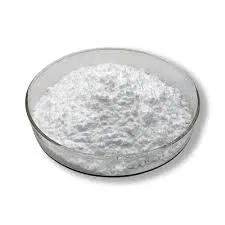
Dec . 05, 2024 06:58 Back to list
hydroxyethyl cellulose hec
Hydroxyethyl Cellulose (HEC) A Versatile Polymer for Modern Applications
Hydroxyethyl cellulose (HEC) is a water-soluble polymer derived from cellulose, a natural polymer found in the cell walls of plants. HEC is synthesized through the etherification of cellulose with ethylene oxide. This modification enhances the solubility of cellulose in water, making HEC a valuable compound in various industrial and consumer applications. Let's explore the properties, uses, and benefits of hydroxyethyl cellulose.
Properties of Hydroxyethyl Cellulose
HEC is characterized by its non-ionic structure and excellent water retention capacity. The degree of substitution (DS) and molecular weight of HEC can be adjusted during its synthesis, allowing for a range of viscosities and solubility profiles. It is generally available in powder form and is compatible with a wide variety of surfactants and other additives.
One of the defining features of HEC is its rheological behavior. It acts as a thickening agent, enabling formulations to achieve desirable viscosity levels without significantly altering other properties. Moreover, HEC has good stability across a wide pH range (about 3 to 10), making it suitable for applications in diverse environments.
Applications of Hydroxyethyl Cellulose
1. Cosmetics and Personal Care Products HEC is widely used in the cosmetic industry for its thickening and emulsifying properties. It helps improve the texture and stability of lotions, creams, and gels. Additionally, it acts as a film-forming agent, providing a protective barrier on the skin and improving moisture retention.
2. Pharmaceuticals In the pharmaceutical sector, HEC serves as a viscosity modifier and stabilizer in liquid formulations. It is often used in oral suspensions and topical gels, enhancing the bioavailability of active ingredients while ensuring uniform distribution.
3. Construction and Building Materials HEC plays a crucial role in the construction industry, particularly in cement-based applications. It improves the workability of mortar and plaster while enhancing water retention, which is vital for the curing process. This helps in achieving better adhesion and durability of the material.
hydroxyethyl cellulose hec

4. Food Industry In the food sector, HEC is utilized as a food additive due to its textural properties. It functions as a thickener, stabilizer, and emulsifier in various products, contributing to improved mouthfeel and overall quality.
5. Oil and Gas Industry HEC is employed in drilling fluids to control viscosity and improve the efficiency of the drilling process. Its ability to maintain stability under varying temperatures and salinities makes it a preferred choice in this industry.
Benefits of Hydroxyethyl Cellulose
The use of HEC offers several advantages. Its non-toxic and biodegradable nature makes it an environmentally friendly choice for many applications. As consumers become more environmentally conscious, HEC's renewable origin from plant cellulose aligns with the demand for sustainable products.
Moreover, HEC's versatility in formulation allows manufacturers to customize products according to specific requirements, whether it's adjusting viscosity, enhancing stability, or improving texture. This adaptability is a significant reason behind the growing popularity of HEC across various industries.
Finally, the global market for hydroxyethyl cellulose is expanding. Its applications are evolving with advancements in technology and consumer preferences. As industries continue seeking multifunctional and sustainable materials, HEC's potential is only expected to grow.
Conclusion
Hydroxyethyl cellulose is a remarkable polymer that exemplifies the intersection of nature and technology. Its unique properties and wide range of applications make it an indispensable ingredient in many fields, from cosmetics and pharmaceuticals to construction and food. As the demand for eco-friendly and efficient materials increases, HEC stands poised to play an even more significant role in the future. By harnessing the potential of this versatile polymer, industries can innovate and create products that meet the needs of consumers while being mindful of environmental impact.
-
Versatile Hpmc Uses in Different Industries
NewsJun.19,2025
-
Redispersible Powder's Role in Enhancing Durability of Construction Products
NewsJun.19,2025
-
Hydroxyethyl Cellulose Applications Driving Green Industrial Processes
NewsJun.19,2025
-
Exploring Different Redispersible Polymer Powder
NewsJun.19,2025
-
Choosing the Right Mortar Bonding Agent
NewsJun.19,2025
-
Applications and Significance of China Hpmc in Modern Industries
NewsJun.19,2025







